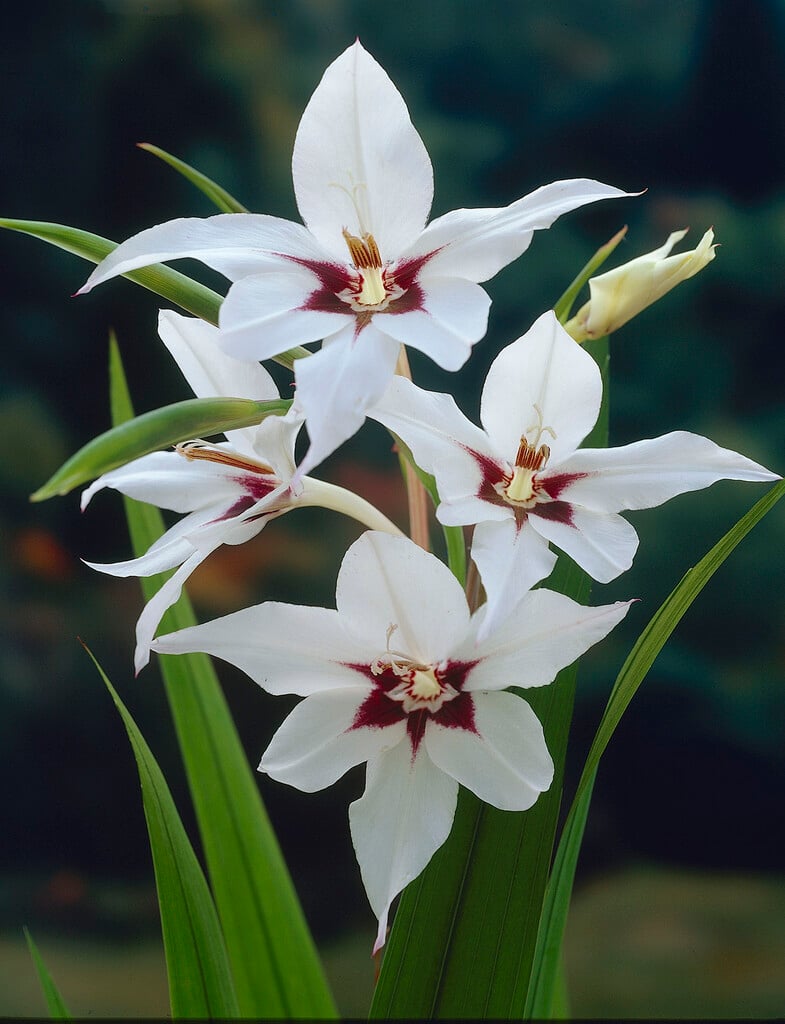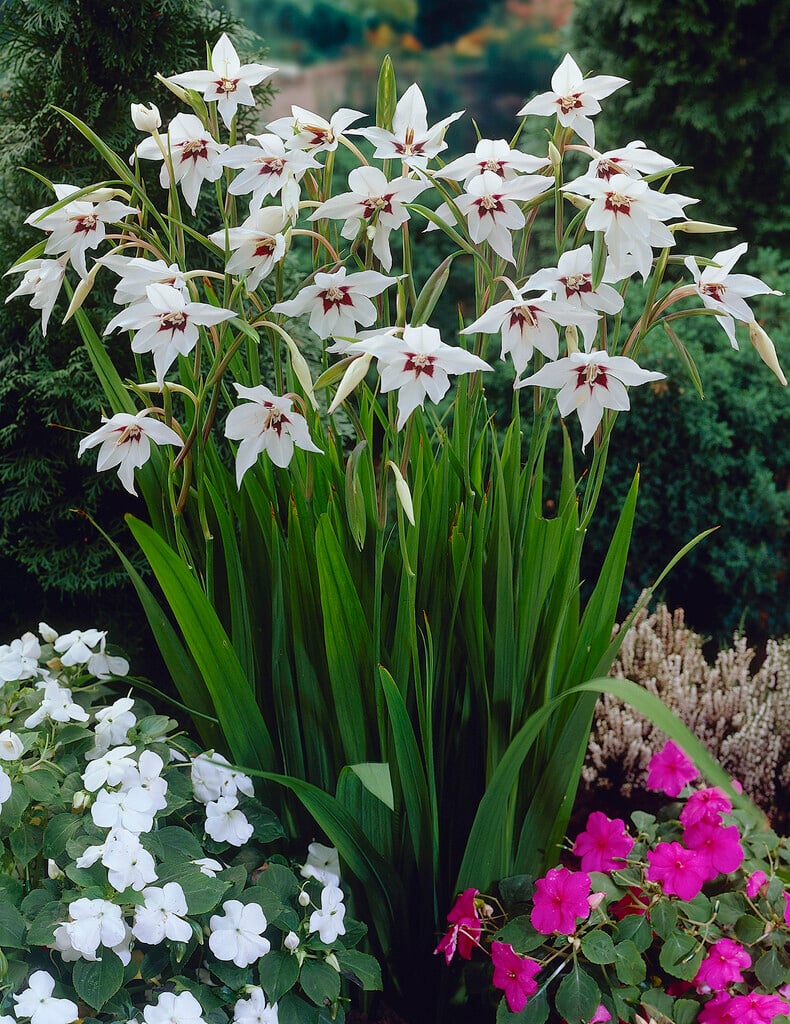Gladiolus murielae
Abyssinian gladiolus
A perennial to 1m, with long grassy leaves and erect stems each bearing several fragrant, hooded white flowers 5cm in width, carried on arching, slender tubes and prominently blotched purple in throat
Synonyms
Gladiolus bicolor 'Murielae'Gladiolus 'Murieliae'
see moreGladiolus callianthus 'Murielae'
Acidanthera bicolor 'Murielae'
Acidanthera murielae
Acidanthera bicolor
Gladiolus callianthus
Size
Ultimate height
0.5–1 metresTime to ultimate height
2–5 yearsUltimate spread
0–0.1 metreGrowing conditions
Moisture
Moist but well–drained, Well–drainedpH
Acid, Alkaline, NeutralColour & scent
| Stem | Flower | Foliage | Fruit | |
| Spring | Green | |||
|---|---|---|---|---|
| Summer | Purple White | Green | ||
| Autumn | ||||
| Winter |
Position
- Full sun
Aspect
South–facing or East–facing or West–facing
Exposure
Sheltered Hardiness
H3Botanical details
- Family
- Iridaceae
- Native to GB / Ireland
- No
- Foliage
- Deciduous
- Habit
- Columnar upright
- Potentially harmful
- Ornamental bulbs, not to be eaten. Wear gloves and other protective equipment when handling. Pets: Harmful if eaten. For further information and contact numbers regarding pets, see the HTA guide to potentially harmful plants
- Genus
Gladiolus are cormous perennials with fans of sword-shaped or linear leaves and spikes of funnel-shaped flowers
- Name status
Correct
- Plant range
- East Africa
How to grow
Cultivation
Plant 10 to 16cm deep on a bed of sharp sand in fertile, well-drained soil. Lift when foliage dies back, discard old corms and store new corms in a dry frost-free place until planting in the spring. In milder areas a thick dry winter mulch may suffice
Propagation
Propagate by separating cormlets when dormant
Suggested planting locations and garden types
- Cottage and informal garden
- Flower borders and beds
- Cut flowers
Pruning
No pruning required
Pests
May be susceptible to gladiolus thrip, aphids and slugs
Diseases
May be susceptible to gladiolus corm rot, grey moulds (Botrytis), Fusarium bulb rot, gladiolus core rot, gladiolus dry rot, gladiolus scab and neck rot, fungal leaf spot, and virus diseases
Love gardening
Sign up to receive regular gardening tips, inspiration, offers and more
View our Privacy Policy
Get involved
The Royal Horticultural Society is the UK’s leading gardening charity. We aim to enrich everyone’s life through plants, and make the UK a greener and more beautiful place.

